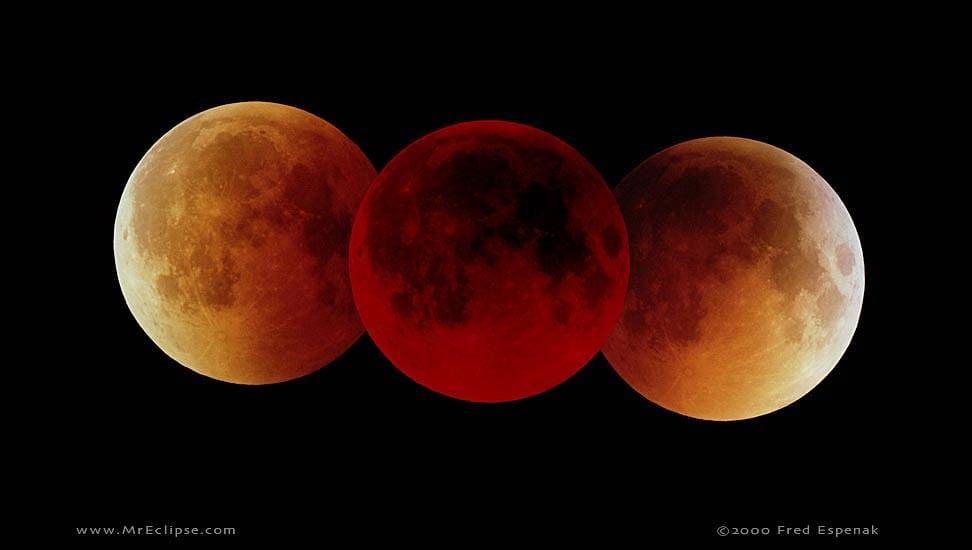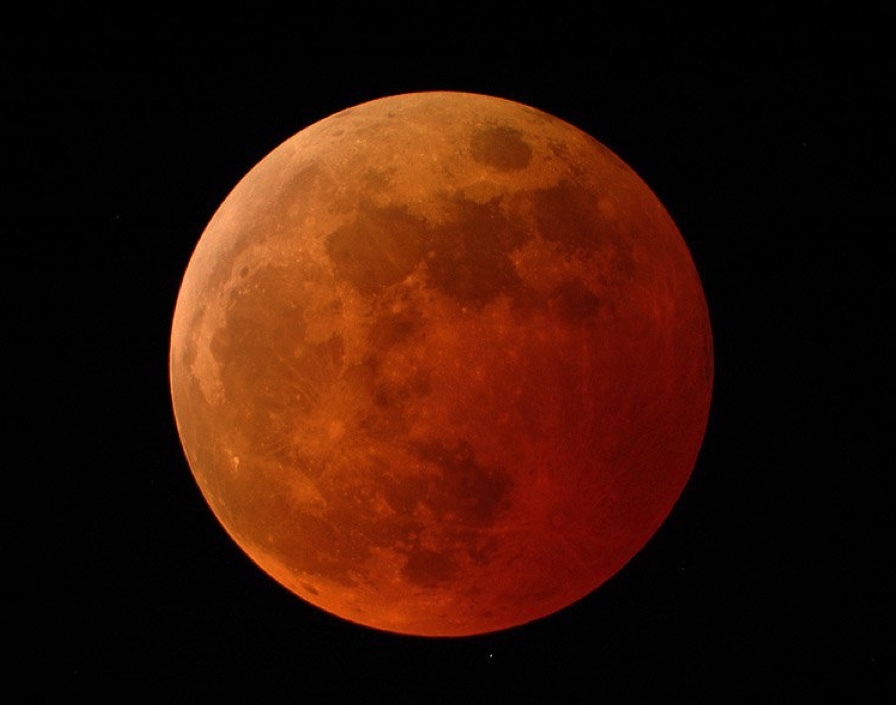COSMIC STRINGS ALERT: Total Lunar Eclipse May 15!
By Cosmic Strings In Cosmic StringsHow are you at staying up really late? Can you handle a Monday at work on short sleep? You might want to plan on getting that extra supersized bucket of coffee on Monday morning May 16, because there’s a really good reason to stay up very, very late on Sunday night this week.
A total lunar eclipse. The entire event is visible across the eastern half of the United States. It’s going to be quite the show.
A lunar eclipse occurs when the Moon passes through the Earth’s shadow. Essentially, the Earth blocks sunlight from reaching the Moon. A solar eclipse happens when the Moon blocks the Sun from the Earth. Solar eclipses are challenging – totality lasts for only a handful of minutes, can only be seen from a small portion of the surface of the Earth, and requires special equipment to see the partial phases safely. A lunar eclipse is just the opposite. Since the Earth is much larger than the Moon, it casts a much bigger shadow. A total lunar eclipse lasts for hours, and can easily be seen without special equipment by anyone on the nighttime side of our planet. All you need to do is go outside at the right time and look up. As long as the weather is clear, you’ll see it.
This particular eclipse begins around 9:30pm, but honestly, there isn’t much to see for the first hour. That’s because a shadow has two parts – the umbra, or deepest part of the shadow, and the penumbra, which is much fainter. At about 9:30pm, the Moon will move into the penumbra of the Earth’s shadow. But the penumbra doesn’t really reduce the amount of sunlight striking the Moon all that much, so if you want to skip that bit, wait to go outside until about 10:30pm. By this time, the Moon will begin to enter the umbra, and that’s when things get really cool.
At first, it will look like something has taken a bite out of one edge of the Moon. Slowly, over the next hour or so, the Moon will seem to disappear, finally beginning to take on a distinctive reddish color. This color is caused by small amounts of light from the Sun making it through the atmosphere of the Earth and reaching the Moon. Red light scatters the least, and so the Moon will appear reddish. Exactly what shade of red we will see depends on the state of Earth’s atmosphere at the time – how much dust and pollution is present. The darker the color, the dirtier the Earth’s air is at the time. Eclipses that occur around the same time as large volcanic eruptions are always extremely dark.


Three images of a lunar eclipse, showing the deepest part of the eclipse in the middle. Images by Fred Espenak. Courtesy NASA
Overall, the eclipse will last for about 5-6 hours, depending on whether or not you choose to watch the penumbral phases of the eclipse. By 3:30am on Monday morning, the show is over. But the experience will be well worth it – a total lunar eclipse is a stunningly beautiful sight. Here’s hoping the weather will prove cooperative. Want to learn more about this eclipse before it happens? Come join us at the VLM on Saturday May 14 for our monthly Stargazing event. We’ll be talking about the eclipse during our Virginia Skies show in the planetarium at 6pm, plus you can enjoy FREE night sky viewing with telescopes (weather permitting) as well as awesome laser shows throughout the evening. Planetarium and laser shows are $8 each, $5 for members. See you there!







No Comment
Sorry, the comment form is closed at this time.